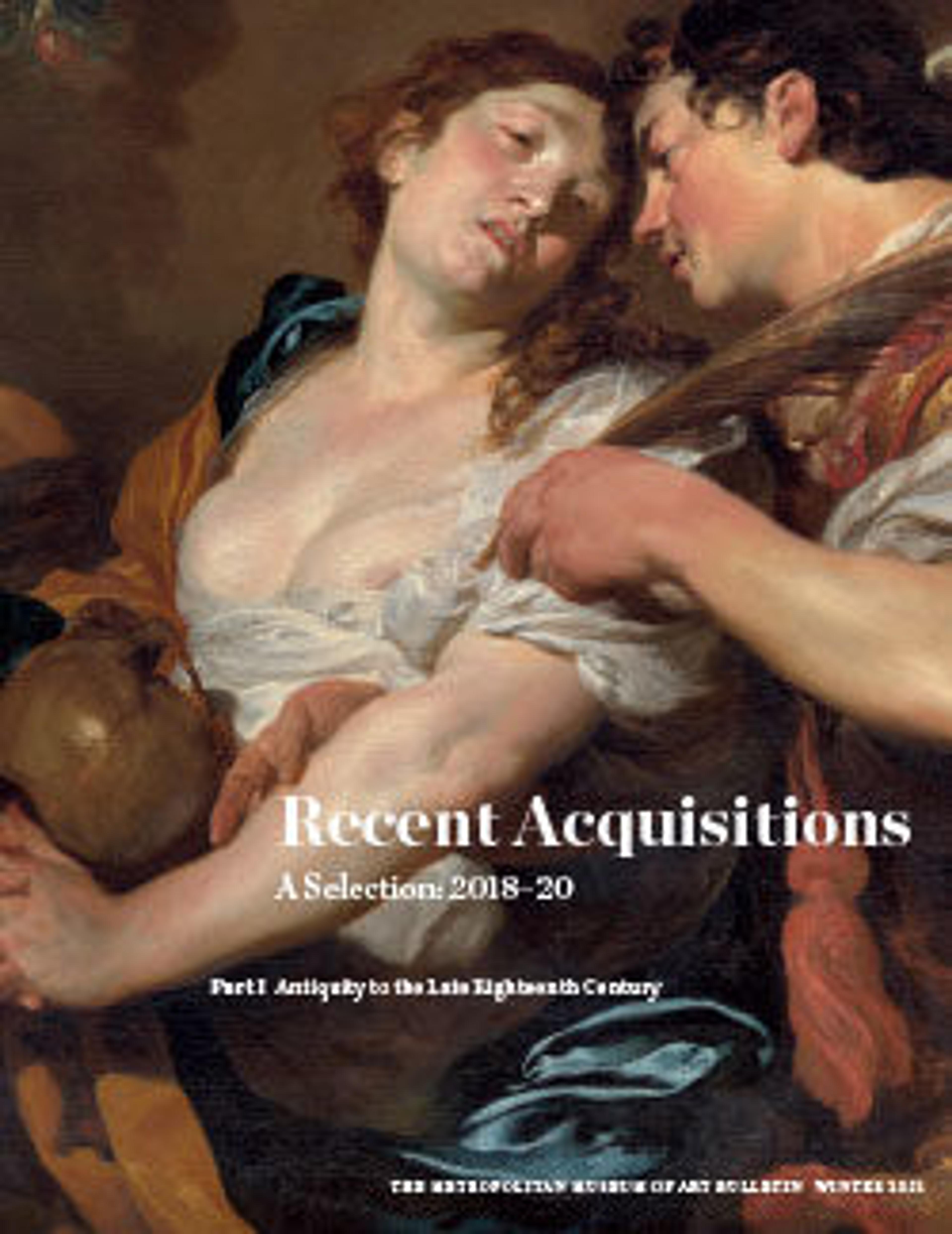Tile with Cintamani Design
The çintamani pattern – a cluster of three roundels paired with wavy stripes – is one of the leitmotifs of Ottoman art. Derived from the Sanskrit word for "auspicious jewel," the motif originated in Buddhist art. At the Ottoman court the motif came to evoke strength and power and is seen in many media, including architectural decoration, textile design, and ceramics. On this rare tile, the çintamani is the dominant and sole motif. It probably once belonged to a çintamani border surrounding a larger wall composition, such as at the Rüstem Pasha Mosque (1561) in Eminonu or the Apartment of the Sacred Mantle and the Library of Ahmed III at the Topkapi Palace in Istanbul.
Artwork Details
- Title:Tile with Cintamani Design
- Date:ca. 1560–70
- Geography:Made in Turkey, Iznik
- Medium:Stonepaste; polychrome painted under transparent glaze
- Dimensions:H. 4 11/16 in. (11.9 cm)
W. 9 11/16 in. (24.6 cm) - Classification:Ceramics-Tiles
- Credit Line:Turkish Centennial Fund, 2019
- Object Number:2019.173
- Curatorial Department: Islamic Art
More Artwork
Research Resources
The Met provides unparalleled resources for research and welcomes an international community of students and scholars. The Met's Open Access API is where creators and researchers can connect to the The Met collection. Open Access data and public domain images are available for unrestricted commercial and noncommercial use without permission or fee.
To request images under copyright and other restrictions, please use this Image Request form.
Feedback
We continue to research and examine historical and cultural context for objects in The Met collection. If you have comments or questions about this object record, please contact us using the form below. The Museum looks forward to receiving your comments.
